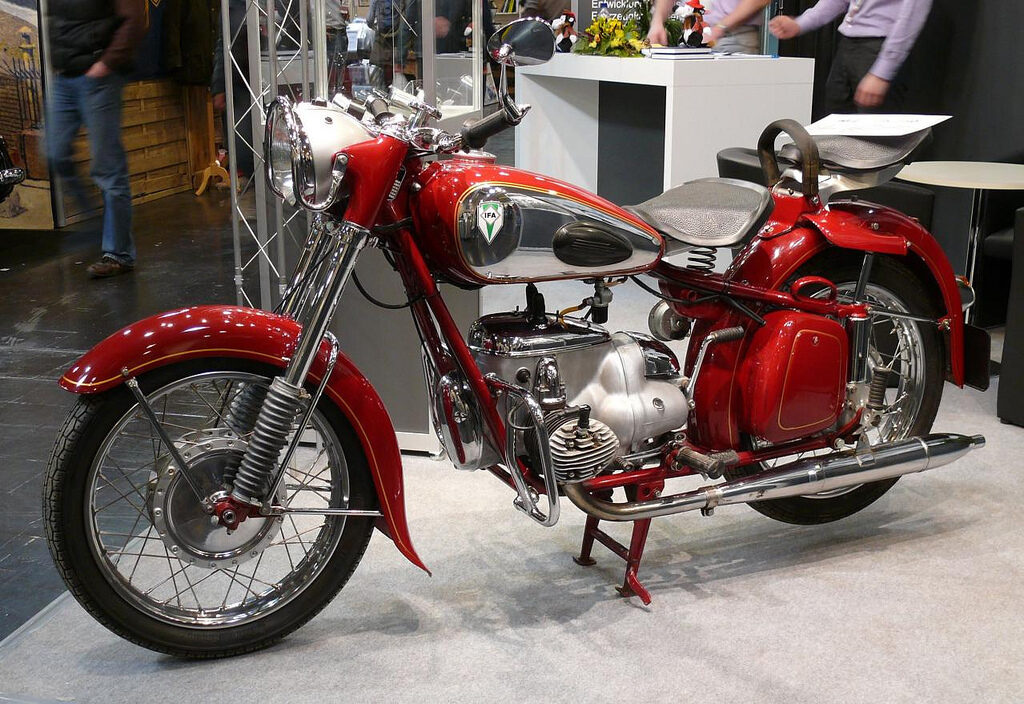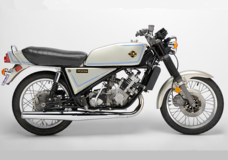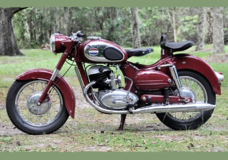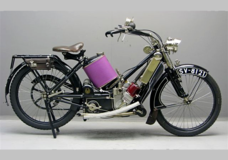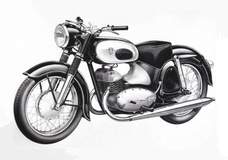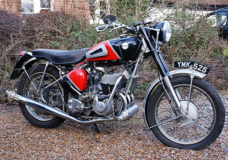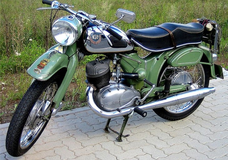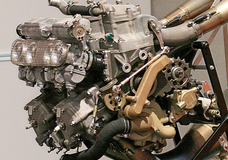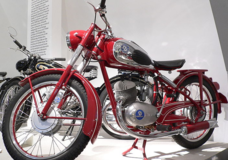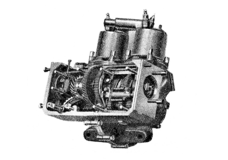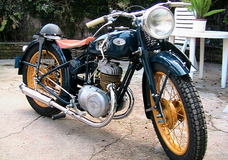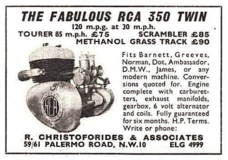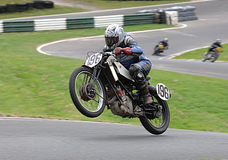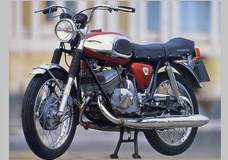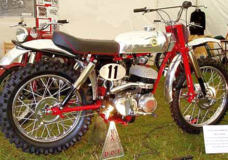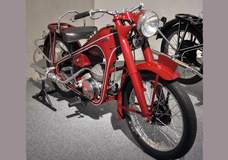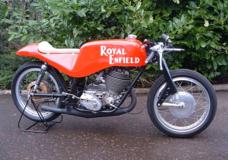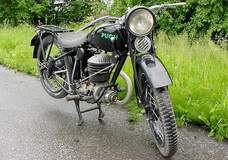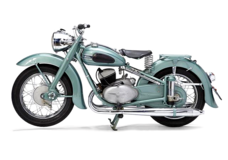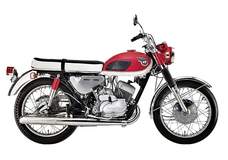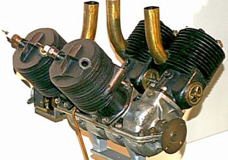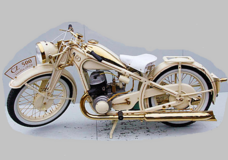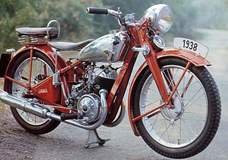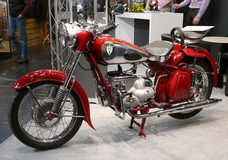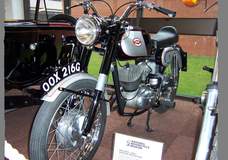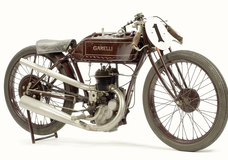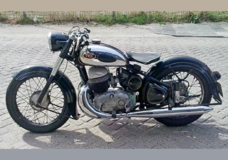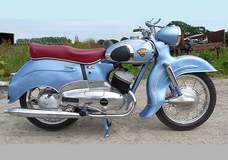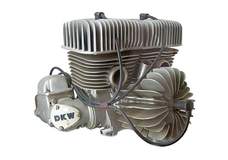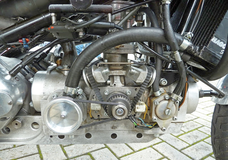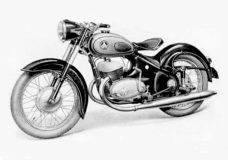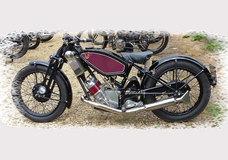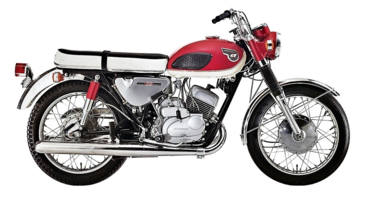
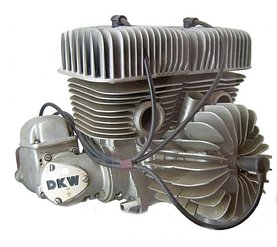
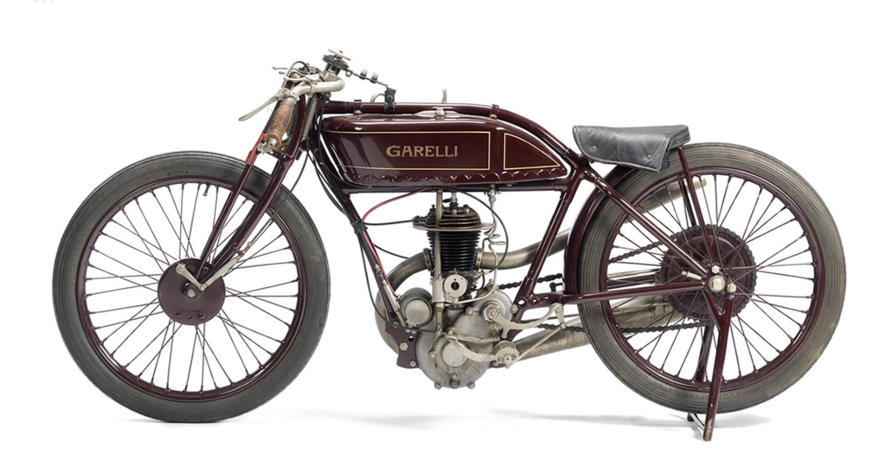
This page updated on 10/06/2016
Two-stroke motorcycle history.
DKW - IFA - MZ
In particular the very significant RT125 DKW 1904.
The Dane Jorge Skafte Rasmussen (1878-1964) studied engineering at Chemnitz and in 1904 together with his friend Ernst set up Rasmussen & Ernst GmbH, a company to trade in exhaust steam oil traps and pipe fittings.
During the 1914-18 War Rasmussen experimented with a steam powered car: Dampf-Kraft-Wagen (DKW), a project that was abandoned at the end of the War because of cost reasons.
In 1916 Rasmussen founded a factory in Zschopau, Saxony, Germany to produce steam fittings and in the same year DKW was formed.
DKW Motorcycles 1921 - 1966.
In 1921 Rasmussen began producing a series of motor powered bicycles and by now the DKW initials had established themselves as the company name, which was finally trademarked in 1922.
The first notable DKW motorcycles were the 1925 E206, powered by a two-stroke single-cylinder 206cc engine and the later 198cc E200, these two models were among the most successful products in the company‘s history.
During the late 1920s and 1930s DKW was the world's largest two-stroke motorcycle manufacturer producing over 60,000 machines a year.
The man behind the success of DKW's early two-strokes was Hugo Rupp, born 15th August 1879 in Apolda, Germany, an engineer and automobile pioneer. In 1907 Ruppe founded his own MAF car plant in Markranstädt and was the technical director until 1914 when he was called up for the German Army. He survived the war and in 1919 he joined DKW in Zschopau, just three years after Rasmussen had started his steam fittings company.
Ruppe developed his first two-stroke engine, a 18cc toy-engine for children which could replace a child’s steam-engine and second engine was introduced in 1920, an 118cc auxiliary engine for bicycles, it proved a huge success and sold in extraordinary numbers.
One of Ruppe's main tasks while working for DKW was to design a user-friendly two-stroke to include a primary gear drive, a flywheel magneto and a simplified improved carburettor. Ruppe left DKW in 1922 and founded Bekamo in Berlin to produce a new 129cc engine which was an instant hit, however by 1925 Ruppe was bankrupt.
The DKW initials appear several times with different meanings before the DKW name was actually trademarked in 1922, we had:
Dampf Kraft Wagen (DKW) Steam Engine Vehicle.
Des Knaben Wunch (DKW) every boy’s dream, the nickname for Rasmussen’s 40cc two-stroke petrol engine, intended for use in toys and it’s reliability earned it the nickname.
Das Kliene Wunder (DKW) the little wonder, a name given to their good performing light weight auxiliary engined motorcycles and bicycles.
During the late 1920s and 1930s DKW was the world's largest two-stroke motorcycle manufacturer producing over 60,000 machines a year, however the great depression was to follow, resulting in DKW suffering a massive decrease in production and in 1932 they merged with the companies of Audi, Wanderer and Horch to form Auto Union AG, a merger still represented today in the four interconnected rings of the well-known Audi logo, the DKW name still existed but now officially known as Auto Union DKW.
Audi focussed their attention on cars while DKW continued with motorcycles and their small cars, their cars were introduced in 1931 and were particularly popular in Northern Europe.
DKW's contribution to two-stroke technology was huge, Adolf Schnurle’s loop scavenging and Erich Wolf’s expansion chambers. Their motorcycle production range before the war was incredibly prolific and innovative, making two-stroke motorcycles of many capacities, single cylinder engines of 100, 125, 175, 200, 250cc and twin cylinder 350, 500, 500 water-cooled, 600, 600 water-cooled and super sports versions and even a 1000cc twin.
In 1937 DKW released the NZ series of 250cc and 350cc motorcycles followed by the famous DKW RT125, a masterpiece from Hermann Weber their chief designer.
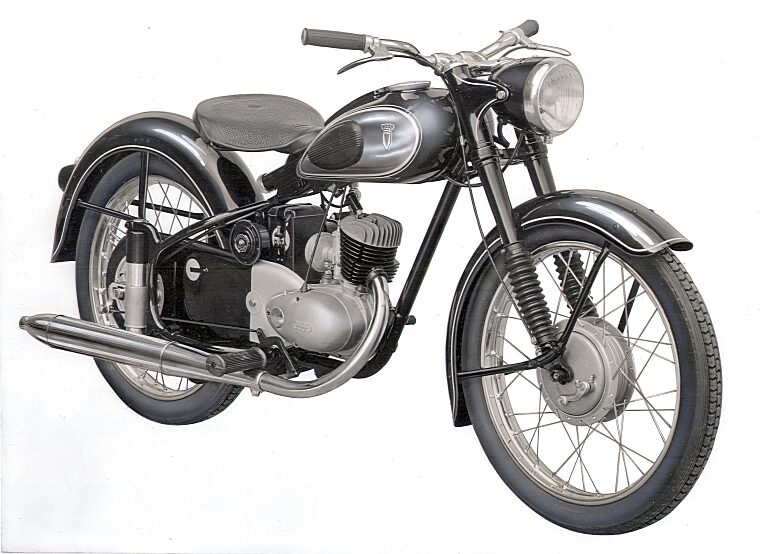
DKW RT125 1954
DKW RT125
The RT125 had a convoluted manufacturing route, different manufacturers and different countries but the same motorcycle, a result of the Second World War and the division of Germany. DKW's first factory was in Zschopau, later to become East Germany and their second factory was in Ingolstadt and now West Germany.
RT125 production timeline.
DKW RT125 East Germany 1939 - 1944.
IFA/MZ RT125 East Germany 1950 - 1961.
DKW RT125 West Germany 1949 - 1961.
The DKW RT125 is famously regarded as the most copied engine ever, a design that was forfeited to the Allies after World War II. With the engine now available for all to copy it was to appear in many forms, the BSA Bantam, Yamaha YA-1 and the Harley-Davidson Hummer, in fact there are over 20 manufacturers who based their 125 engines on the DKW RT125.
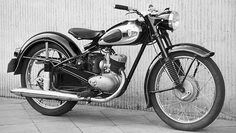
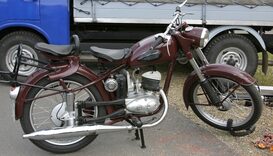
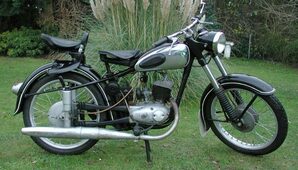
DKW RT125 IFA RT125 MZ RT125
Single cylinder air-cooled 123cc two-stroke.
6.4 bhp at 5,600 rpm. Maximum speed 55 mph. Bore and Stroke 52 x 58mm.
22,350 DKW RT125 motorcycles were produced between 1954-1957.
DKW engineers also created the Cyclemaster, essentially a repatriated redesigned 1938 Sachs Saxonette auxiliary unit, the engine was mounted on the rear wheel of a normal bicycle, they were very popular in England as I often witnessed these devices buzzing around.
During the war DKW concentrated on military vehicles for the Nazi’s, which included versions of the NZ350 and the RT125. Towards the end of the war, damage to the Zschopau factory forces DKW to cease production, the last RT125 was in 1944 and in 1945 the complete DKW factory was disassembled and the machinery confiscated by the Russians.
My sources regarding the state of the factory after the war is slightly conflicting, some sources states the factory was
undamaged whereas other sources says the factory WAS damaged. I suspect it was only partially damaged as production resumed in 1949 but now under the IFA name.
The first DKW motorcycle to be built in Ingolstadt, West Germany was the RT125W, revealed in the autumn of 1949. In 1954 an improved RT125/2H was launched with more power and now giving 6.4 bhp, another new feature was the telescopic rear wheel suspension in a reinforced frame. This meant that even the smallest model in the DKW motorcycle range had been upgraded to satisfy performance and ride comfort requirements.
The Auto Union management who now owned DKW was relocated in Ingolstadt West Germany and motorcycle production resumed there in 1948 but in 1961 production ended.
It was before the war that saw the most innovative and prolific period of DKW’s motorcycles development, whereas after the war it was the turn of the car, producing two-stroke car engines of varying capacities and configurations, 500cc and 600cc twin-cylinder, 900cc and 1200cc three-cylinder and 1000cc and 1300cc V-6.
The infamous Trabant and the Wartburg used DKW technology and the first Saab car two-stroke twin-cylinder 764cc engine was based on a DKW design.
The earlier merger before the war of DKW when they became part of the Auto Union AG group is followed by another in the 1950s, this time with Victoria and Express to form Zweirad-Union, which in turn was absorbed by Sachs in 1965.
Sachs also made motorcycles but after this takeover the DKW motorcycle we knew was no longer, it had lost it’s identity.
Auto Union came under Daimler-Benz ownership in 1957 and was later purchased by the Volkswagen Group in 1964.
IFA - Industrieverwaltung Fahrzeugbau. Motorcycles 1948 - 1956.
As a result of the Second World War Germany ended up with two zones, the French, British and American zone to become the Federal Republic of Germany (West Germany) and the Soviet zone to become the German Democratic Republic (East Germany).
With the old Germany now two separate countries and with motorcycle production interrupted because of the war, we now have two different manufactures emerging both producing the same RT125 motorcycle.
We had DKW reforming in West Germany at Ingolstadt in 1949 to produce their DKW RT125’s and back in East Germany and in DKW’s old Zschopau factory we now had the East Germans producing their own IFA RT125’s, not DKW anymore it's now IFA, a state owned company created in 1948. IFA start the production of parts and engines and in 1950 the IFA RT125 leaves the production line, an improvement on the original DKW design, robust and reliable.
For a while the motorcycles from the IFA company were sold as DKW-IFA, however because of legal proceedings taken by Auto Union DKW, the initials were dropped from DKW-IFA and they continued production under the IFA brand. You can’t blame IFA for including the DKW name, it was worth a try! The IFA name continued up to 1956 when it became MZ.
MZ - Motorradwerk Zschopau. Motorcycles 1956 - 2008.
In 1956 the MZ name is launched and the IFA RT125 is now the MZ RT125 with production continuing till 1961 and the following year in 1962 MZ started manufacturing their ES 125/ES 150 range of motorcycles, larger capacity machines followed later.
Although the East German MZ road bikes were far from advanced they do deserve a mention. Their motorcycles were generally perceived as quirky and agricultural with rough engine castings but were generally perceived as being robust devices, however if I recall correctly there was a particular model, a 250 I think that had a very bad reputation of main bearing failures and Wilf Green the MZ importer had to replace the troublesome bearings with British ones.
The TS250 Supafive from around 1980 was an odd looking machine, there was no front down tube and the large engine just hanging there beneath an ugly bloated petrol tank. They had a reputation for non-existent brakes and poor road holding, however they became a cult following for some and there was also the MZ racing club which provided inexpensive racing.
The Berlin wall came down in 1989 and in December 1990 MZ is privatized and in 1993 MZ goes under receivership and purchased by a Turkish company and MZ becomes MuZ. In 1996 MuZ was bought by a Malaysian group and they drop the ‘U’ and it’s MZ again. Operations end at the end of 2008 because of years of continuing losses.
On 12 December 2008 the MZ factory in Zschopau closes, bringing a halt to motorcycle production that had lasted for 88 years in the same town, producing motorcycles since 1922 and one of the oldest motorcycle factories in the world.
In 2009 former GP stars Ralf Waldmann and Martin Wimmer buy the MZ motorcycle brand and for a while the MZ name can was seen racing in the Moto2 GP class.
The most well-known MZ models were the two-stroke 125/150 and 250/301 series and the less well known model IFA-MZ BK350, a unique horizontally opposed shaft drive 350cc twin, see the picture below.
Sadly in 2013 MZ were no more.
IFA/MZ 350cc two-stroke - shaft drive flat twin - 1952/1959.
